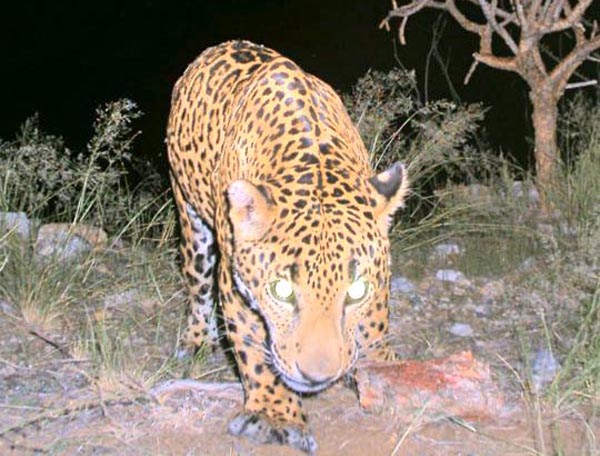
In March 2009, headlines told us that “the last jaguar in the United States” had died in the Phoenix Zoo in Arizona after being snared in the wild during a routine study. His given name was “Macho B,” and his death – euthanasia at the hands of veterinarians shortly after an orchestrated capture – was originally publicly lamented as a necessary course of action for the aging, endangered cat, whose last days were wrought in an agony that could have only been brought by fifteen years of living wild. That’s how the story played, at least – until Janay Brun, a field tech for the Borderlands Jaguar Detection Project, came forward to blow the whistle on the operation, out her superiors for neglect and hubris, and set the wheels in motion for a federal criminal investigation into the illegal “take” of an endangered species.
Last fall I created a billboard eulogizing Macho B as part of a Justseeds installation focusing on immigration justice. It was my hope to tie the story of Macho B and other wildlife – as they struggle against the physicality of the heavily fortified border wall – with the human experience in criminalized migration. What I hadn’t expected was to hear directly from Janay Brun, who had not only been intimately involved with Macho B for ten years prior to his death, but who also suggested that his passing had been more than a result of his poor health; it was the terminus of a whole series of blundering egos, the arrogance of big game hunters, and state agencies seemingly manipulating (or ignoring) their power to catch a trophy cat in lieu of conservation.
In March 2012, a little over three years after Macho B’s death, my cohort Jessica McPherson and I sat down with Janay to conduct a taped interview about her experience with Macho B’s last days and aftermath. For years, Janay had worked with a research project along the U.S./Mexico border, tracking and documenting instances of the remaining wild jaguars that roam the Sonoran Desert. Unbeknownst to most people living outside of Arizona/New Mexico, these giant cats are still traverse the South, like prehistoric ghosts laden with a cultural and spiritual significance spanning thousands of years, yet still triggering in the contemporary mind in the way that all big predators – what are left of them – still are to us. She keeps a blog now and is working on a book about her experience in the context of the larger picture of wildlife conservation.
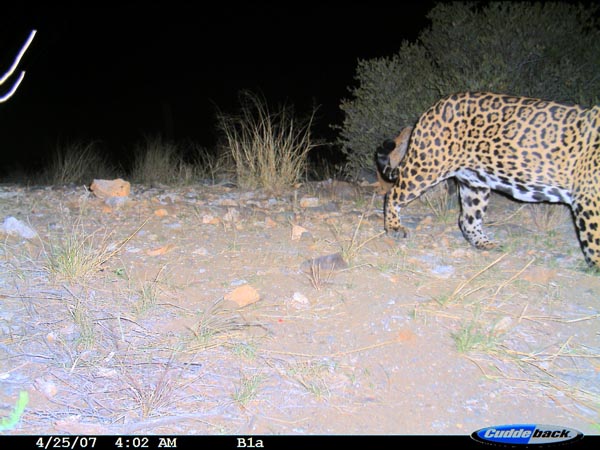
Janay:
I got involved with cats in 1999, I was living in a small mountain range and I knew nothing about wildlife. I was on a walk with my dogs, and we were on a trail behind our house. We turned a bend in a corner and about a hundred feet away was a sillouette of a large cat on a rock. It was twilight, so he was in shadow. We connected eyes for a moment, and then my dogs gave chase, he jumped down – and he was vocalizing, it was this cough, this very loud coughing sound, it sounded like a gigantic hairball was stuck in this cat. As he was running away – my dogs were puppies, and so they chased him for about ten seconds, turned around, ran back to me, ran past me and ran all the way home… that’s where I found them later. So, I was in this small canyon, and the cat ran down the trail and he ended up so he was across this small chasm from me, and he was still vocalizing. I had no idea what it was, but for some reason I was like ‘that’s a jaguar’. I was trying to find him while he was vocalizing – I had the most glorious moments of my life in this canyon. After that, on my way home – it happened so quick it was like a dream – I was trying to find the sound of that voice, to confirm the encounter, because I didn’t think it was a (mountain) lion. I got a book, Jaguar by Alan Rabinowitz. He didn’t really have anything in there, and it was before I knew about the internet really, and then several years later I ended up looking up jaguar sounds on the internet and there was that vocalization. I knew for sure that it was a jaguar.
So, Macho B got me involved. I got really curious so I just started going out in the desert and teaching myself. I bought a bunch of books, taught myself, volunteered for a bunch of different projects, and then seven years later I put cameras where I encountered that animal, and I got a picture of Macho B.
These were cameras I set up when I was a volunteer for the jaguar project I worked with.
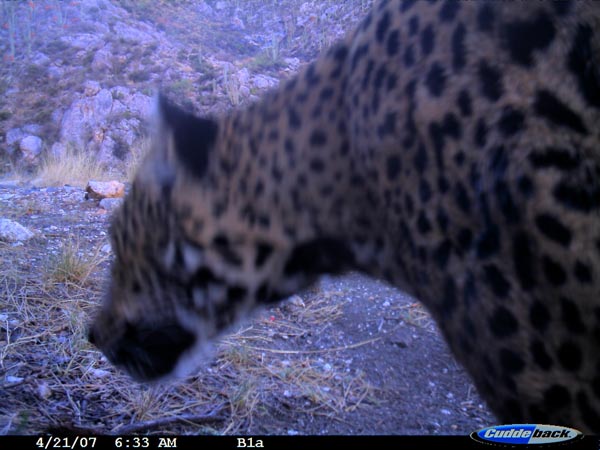
Jessica: So, what year was this, and where were you living when you saw this cat for the first time?
Janay: I was living south of Tucson, that was in 1999, and it took me until 2002 until I became a volunteer on the Borderland Jaguar Detection Project. I volunteered for them, and I volunteered for a group called Sky Island Alliance, and then I was also an intern on the Buenos Aires National Wildlife Refuge – there I was doing quail, but it was right on the border, so when I would get off work then I would go and look for cats. This was mostly lions that I was finding, I was looking for jaguars and lions, so my education with cats is really from lions and following them around. Then, in 2006 I became more involved with the jaguar project and we started documenting jaguars more and more, and then when I put the cameras up where I met Macho B originally that’s when I found out who he was. He’d been documented down by the border, and they had named him (“Macho” just being “male” in Spanish, “Male B”).
Jessica: Tell us about the “project” you’re referring to…
Janay: Borderland Jaguar Detection Project. It was founded by Jack Childs and his wife and his hunting partner Matt Colvin. In 1996, they were out running their – they were lion hunters – they were out running their hound dogs for exercise, south of where I first encountered Macho B, and their dogs treed a jaguar. They took video of it, pictures of it, it was the first time a jaguar had been documented in Arizona in decades. That got Jack and Matt involved, because six months prior another lion hunter on the border of Arizona and New Mexico, his hound dogs also treed a jaguar. So these two sightings within six months were the first documentation of jaguars in the Southwest in decades.
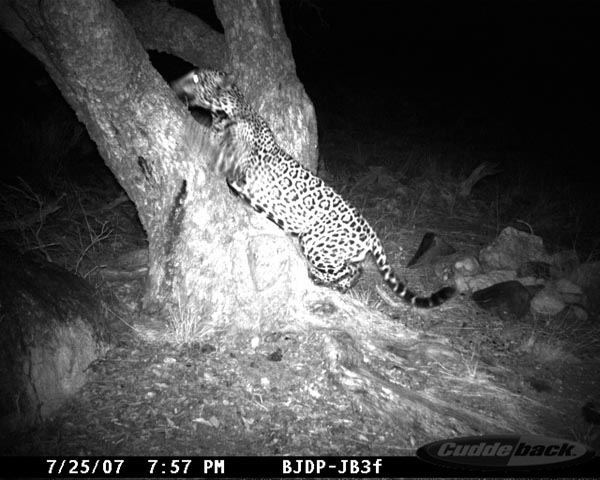
The jaguar was listed as an endangered species after that in the United States, and Jack formed the Borderland Jaguar Detection Project to do research to document jaguars. They were thinking, “oh, two in six months after so many years, maybe they’re starting to come back up here and they’re going to repopulate”. So he started that project, and he was working with (Arizona) Game & Fish and U.S. Fish & Wildlife.
Jessica: So that’s who you were working with…
Janay: I was a volunteer for many years, and then I started getting paid in 2007 after I started getting documentation consistently of Macho B in the area where I first encountered him. That went on for a couple of years, until Macho B was snared and then killed two years later. He was killed on March 2nd, 2009.
Jessica: Do you want to tell us any more about how that happened?
Janay: Yeah, let’s see… My immediate supervisor for the Borderland Jaguar Detection Project was Emil McCain. He was hired several years prior. He was a graduate student, and he was kind of taking over doing the field work, Jack was older and didn’t want to go out in the field as much. So, I was working with him (Emil), he got a contract with Arizona Game and Fish to set snares for a lion and bear project that they were doing on the border. So, he set snares in our study area – we had remote cameras all along the border, so it would take a picture of an animal if it walked by, or anything, it was heat and motion triggered. He was setting snares next to our cameras, basically combining these two projects. He set snares in an area that was a known jaguar corridor, Macho B had used it, the first jaguar that had been documented for the study, Macho A, had been documented there. It’s just a natural area for animals coming up from Mexico, it’s in this little canyon complex, so that’s where he focused snares.
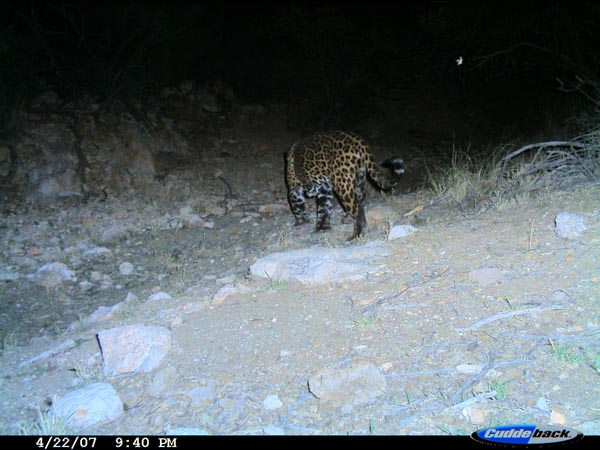
Snares were opened when it was known that Macho B was in the area through photographs, and he was captured two weeks later in a snare. They collared him – it wasn’t McCain that did, it was two field techs with (AZ) Game and Fish who were his co-workers on the project. They were inexperienced, they should not have collared him. They did, he was released and, for twelve days he died a very slow and painful death. It took twelve days for Game and Fish to decide to go in and get a look to see what was going on with him because they didn’t have the coordinates, they didn’t know what was going on with him, they were relying on McCain. He, his father, and my main boss Jack Childs were the only three people who had access to Macho B’s satellite collar. It was a satellite collar that would beam information down to a password-protected web site. You log in and you can see where he is. Those were the only three people in the world who had access to it, Game and Fish didn’t even have it, so they were relying on McCain telling them what Macho B was doing. Well, McCain had a hard time interpreting the collar data. He was very resistent of anyone going in to check out the cat. He (Macho B) had not been moving, McCain thought that maybe he was on a kill, making up all these excuses, then finally he conceded that something could be wrong with Macho B.
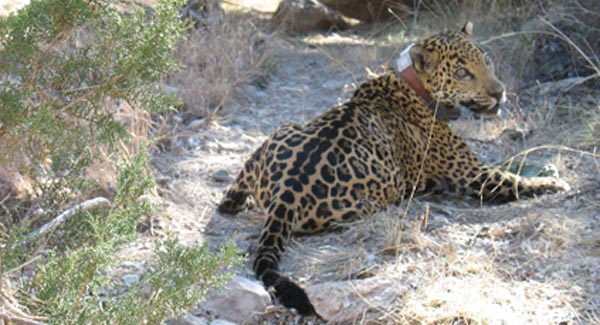
So, they go in, they try to recapture him one night, they failed, they’re not even equiped to do it. They startle him – a covey of quails startles him actually, they startle the quail and the quail startle Macho B. He walks off, they take the shot anyway, the tranquilzer bounces off his rump and the drugs go spraying. So, they missed him but they weren’t even really equiped, I don’t know what they were going to do with him if they actually got him. But, a vet was present and observed him kind of walking like a drunkard. I guess that’s a physical sign of renal failure, somethings wrong with the kidneys. They go in the next day, which was March 2nd, they’ve got a team now, they’ve got a helicopter, a Wildlife Services guy with his hounds, they’ve got Game and Fish people, they’ve got everyone there. They go in to the last satellite transmission, the ground crew can’t find him, so they radio for the helicopter who comes in and they bring in the guy with his hound dogs. Hounds tree him shortly thereafter. I guess he ran about a hundred yards, the vet that was present was saying that he was almost dragging his back legs.
He gets treed, they tranquilize him, they shoot a dart at him from the helicopter, and then it takes them awhile to load Macho B into the helicopter. During this time, all these people involved in this are getting their picture taken with this dying jaguar. They all look like trophy hunters, it’s really sick.
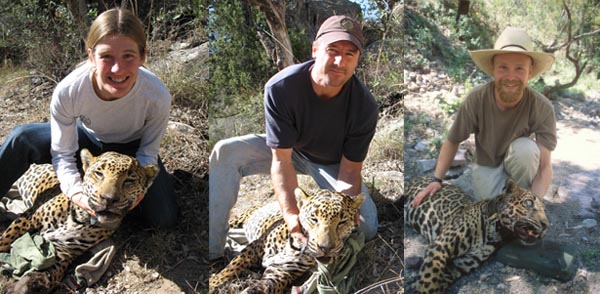
They load him in – they don’t crate him, so he’s uncrated which is a safety concern. He’s been intubated, he’s being given fluids. He gets taken to Tucson, transferred, taken to Phoenix, where he’s taken to the Phoenix Zoo. He arrives there at 3:45, they give him fluids, and by 5:15 he’s dead. They had taken blood from him immediately, and they determined that he was in renal failure. He also had a fractured top left canine from his capture. It’s pretty much a given that any cat that’s caught in a snare, or even a box trap, will break at least one canine trying to get out. Why that’s acceptable, I do not know. But, it’s a given, and most biologists who are aware and have training and knowledge will take, it’s some kind of dental cement? So when that does happen they can cap it. But, Thorry Smith and Michelle Crabb, the two technicians for Game and Fish that were there to initially collar him, they didn’t have that. And, they didn’t even know if the injury was new or old, they couldn’t determine that.
He weighed 98 pounds – he weighed 118 when he was initially captured. So: they have renal failure, they have a broken canine, and he’s got some sort of what they called a severe emphesyma in his left hind hip. His leg – Thorry Smith, who was there for the recapture, described it as being dark in color and feeling like bubble wrap. He’s got air trapped under his skin. So, something’s going on there, and because of all this they determine to humanely euthanize him because they would have to keep him on fluids, he would have to have dental surgery to fix his tooth and avoid infection if he was re-released back into the wild. At 5:13 they administered the drugs, at 5:15 he’s pronounced dead.
They do a cosmetic necropsy on his body at the request of Game and Fish and at the consent of U.S. Fish and Wildlife Service. With that, they determine that his failing kidneys and the broken canine led to his overall decline and, thus, his death.

Jessica: Let’s back up. Why were they snaring an endangered species?
Janay: There’s Arizona Game and Fish Department, and U.S. Fish and Wildlife Service. USFWS is the federal entity who has been tasked by the federal government through the Endangered Species Act to protect and conserve all endangered species. With the jaguar, they kind of gave that over to the state, to Arizona Game and Fish and New Mexico Game and Fish, but they worked in partnership with the two agencies. Why snares were allowed in jaguar habitat, I have no freaking idea. The snaring project, I’m finding out, was illegal. Illegal, or illegitimate, but they needed permits that they didn’t have. It was a federally funded project, so, by law, if a project is occurring in endangered species habitat, they have to determine that they could effect a listed or endangered species. Then the state has to do an environmental assessment and no matter what, because its federal funds that are funding this project, a Section 7 consultation needs to occur with the U.S. Fish and Wildlife Service. These weren’t done for this snaring project. If this gets too confusing let me know, I get confused talking about it!
Jessica: What’s the project?
Janay: The lion and bear snaring project.
Jessica: So they have lion and bears, why is there a jaguar?
Janay: Because all these animals coexist, and they put the snares in areas where there were lion and bears, but where there was knowledge that a jaguar used the same area.
Jessica: Were they intentionally trying to capture a jaguar? Or were they doing a lion and bear snare project and accidentally the jaguar walked into the snare?

Janay: That was the company line. They were doing a lion and bear project, they say the snares were only for lions and bears, but it’s not like animals can read and know that “ok, that snare that I’m about to walk into is really for lions and bears, I shouldn’t go that way”. Right? Right.
So, it’s supposed to be for lions and bears, but they hire my supervisor who’s the biologist for the Jaguar Project. He monitors all the cameras and knows exactly where the jaguar has been in the past, can check them to know where he is currently. He’s given the task of setting the snares wherever the hell he wants, and he puts them right smack in the middle of jaguar habitat, in the middle of our study area. Now, at the time that he did that, Macho B had been gone from our cameras for a year, so we didn’t know if he was still around or in another area. The snares were opened in November, a lion was caught in this one area, they were closed and reopened in February – by February, Macho B had been documented in the area.
So, everyone knew he was alive, everyone knew he was in the area, and at that time these consultations should have been done. They weren’t. So, the company line when Macho B got caught was it was all accidental. But: jaguar biologist, snares set, snares opened when Macho B is around and they know he’s around… and Emil McCain had been trying to get jaguar scat to put out at our camera sites when Macho B had been gone for a year, hoping that would maybe lure another jaguar to the camera area. So jaguar scat was also being used at the camera sites, and I had been directed to place scat at a snare site, and that snare just happened to be the one that caught Macho B.
You have all these variables where they are going after a jaguar. It’s not an accident.

Jessica: You were directed to put jaguar scat at the lion and bear snare?
Janay: Yes. Because both of these projects are working the exact same area. On February 4th, 2009, myself, McCain, and Smith – McCain and Smith working for Game and Fish, but McCain is also working with me on the Borderland Jaguar Detection Project – we’re out in this area one day and we’re just supposed to be checking our cameras, we check them every three months, servicing, checking batteries and memory cards and all that. But the snares are there, so we go to the first camera and I’m setting up the camera and, unbeknownst to me, they start opening up the snare. I didn’t know they were going to be opening snares this day. So, they open the snares – the day before, McCain had just picked up three new pictures of Macho B in an area that’s less than a dozen crow miles away from this area. Snare is opened within ten feet of a camera. We had jaguar scat, which McCain had just acquired, and we’d been placing it at cameras. The scat’s placed there, placed at three more cameras that day, then at the end of the day before I checked the last camera McCain asked me to save some scat for another snare. I’m getting all this stuff, like “everything’s cool, everything’s legal, we’ve got permits, don’t worry” and so I saved the scat for the snare, and I put it down where I’m directed to, and that just happens to be the snare that Macho B got caught at.
I started asking questions. I’m assured there’s permits. I’m asking about Macho B’s age, because he’s at least 15 years old. McCain references the pictures from the day before, “look at how healthy he is, he’s strong, he’ll be alright.” Safety of snaring I’m asking him about, because there’s been controversy about snaring jaguars, can they handle it, because McCain had been involved in at least one known death, possibly two snaring deaths of jaguars. There was another jaguar that had been killed through snaring (this all happened in Sonora). I ask about that and he says he knows what he’s doing.
Now, scat was the big smoking gun, because after I came forward everyone was focused on scat. But, in my experience with Macho B, he didn’t respond to scat. It was actually a deterent, and that’s based on years prior in the area where I had met him and put cameras and was documenting him, and he was actually scent-marking the area, which is the first time that had occurred or been captured on film. McCain had brought leftover scat from years before when he had used it, dumped it at this tree where we had put a camera, Macho B shows up for his monthly visit and then disappears from the area for three months. This was a new movement pattern for him since he had first been photographed in the area the previous September, and it occurred after scat was introduced to the area.
But then, after he got caught at that snare, I doubted that, I was like “well shit, I was wrong”, you know, out of all the places this is where he gets snared, it must have been the scat. I didn’t know at the time that they had placed another snare some distance before that, and Macho B had walked through but it hadn’t caught him. It didn’t have scat or anything around it, but it didn’t catch Macho B because supposedly illegal immigrants had messed with it, so it didn’t deploy. He just kept going down the trail to the next snare which is where the scat was, and that’s where he got caught.
Jessica: You’re saying basically they set up this snaring program for the jaguar, they told you they had permits but they didn’t, is that correct?

Janay: Well, no one knows if there were permits or not. I was told there were permits, I asked McCain, because I had nothing to do with the Game and Fish project. In fact, McCain had invited me to get involved and I said no, because I didn’t want to be involved with snaring animals.
So, after Macho B gets caught, Arizona Game and Fish say it’s an accidental capture during the course of another project that they are doing. But, they failed to mention that this project is occurring right in Macho B’s habitat, in his territory, he’d just been documented there, and that they’ve got the jaguar biologist running the snare lines for them. And then there’s scat – you’ve got all these variables in there saying it’s accidental. So, Game and Fish and US Fish and Wildlife claim there are permits, that they have a permit to intentionally, or, in this case (as they are saying it’s accidental) unintentionally trap and collar a jaguar. That’s been disputed, I mean, you can look at it a million different ways, and no one in either of those agencies really knows.
Jessica: Were there other things they did in the process of the capture which were not appropriate to how one should handle a jaguar?
Janay: Well, I’ve never trapped an animal, so I don’t really have any experience, but at the snare sites you can have these audio transmitters so that as soon as a snare is deployed it sends a signal to the biologist so they can get to the animal quickly, so that animal’s just not caught there for an undetermined amount of time. On this project they were only checking snares once a day, and that was in the morning, and they didn’t have these audio transmitters. This was February, which is winter, and weather in Arizona can be back and forth. Lions are known to be active both day and night during this time of the year, but they’re only checking snares once in the morning, so any animal could be there forever, you know? So, they should have been checked more.
They drew blood – they were drawing blood for checking diseases in cats, that was another aspect of this snaring project for “lions and bears”. But Thorry had never drawn blood before from a cat, and the person he was with, Michelle Crabb, the other technician, had very little animal handling experience. They only could draw a little amount, he had no idea what he was doing. Now, that blood would have been really valuable later on, when Macho B was diagnosed with renal failure, to determine if that was a pre-existing condition or if it was something caused by all the trauma he went through by being snared. They didn’t know how to store it properly either, He only drew a little amount and froze the sample, so it couldn’t be used when they were trying to determine his health before they put him down.
They didn’t clean the injection site, where the dart was, which also happens to be where that severe emphysema was. They didn’t bring in the tooth cement. They used a drug – it was recommended, McCain and Smith had sought outside vet advice, but they used this drug called Telazol. It’s stored in an animal’s body fat, so at any point after the initial capture, an animal can be re-drugged. It’s called “re-narced”. They can hallucinate, and animals can injure themselves. So, for an animal to be at least fifteen years old, and to be drugged once with a drug that could possibly re-drug him: that’s a lot of stress on an older animal. And this drug put him out for like six hours, a long period of time. Macho B, who knows how long he was at that snare, but he broke his canine, he had a javelina tooth found in his tail so he may or may not have been attacked by a javelina when he was caught in this thing.
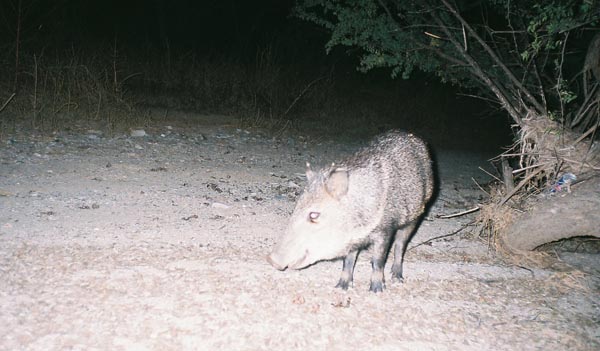
McCain set the snare, and it was set so – it was set on a very well-used game trail. Here’s this tree, a mesquite tree, that the snare is anchored to, so that’s what Macho B was anchored to. He can’t leave. But you’ve got a rock here and a rock here, in close proximity, but you don’t want to have something like that close to a snare because the animal that’s trying to fight the snare is going to end up bumping into the rock and could hurt himself. I found Macho B’s hair on some of these rocks. So, even the snare set itself was dangerous for this animal.
The training that Game and Fish gives to their technicians to handle an animal is minimal at best. There was no vet either, it was just two people. Two people with limited experience in handling animals, had never handled a jaguar before, obviously didn’t know a lot about medical conditions, they didn’t have equipment to monitor his oxygen or anything like that. They weren’t prepared for capturing a fifteen year old jaguar – and the only known jaguar in the United fucking States.
Jessica: Then they collared him?
Janay: Because he’s caught in the snare, he’s gotta be drugged anyways, and a collar specifically made for a jaguar had been donated to the jaguar project I worked for and given to McCain. So, McCain is also working on this lion and bear snaring project, they’re carrying around the jaguar collar every time they go out checking snares. So, they put the collar on him.
Jessica: You said before that they shouldn’t have done that?
Janay: Well, I guess they shouldn’t have snared him, is what I meant.
Shaun: Why snare a jaguar?
Janay: Well, because they “were really trying to get lions and bears.”
(pause)
They “weren’t really after a jaguar.”
Janay’s blog, “Whistling for the Jaguar: the un-redacted story of Macho B”, can be read here. Her book, Cloak and Jaguar: Following a Cat from Desert to Courtroom, is due out in fall of 2015.
(trail camera and border wall pictures courtesy of Janay Brun)
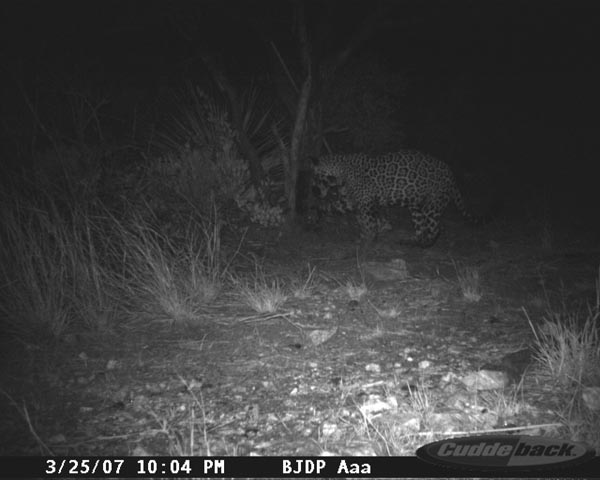
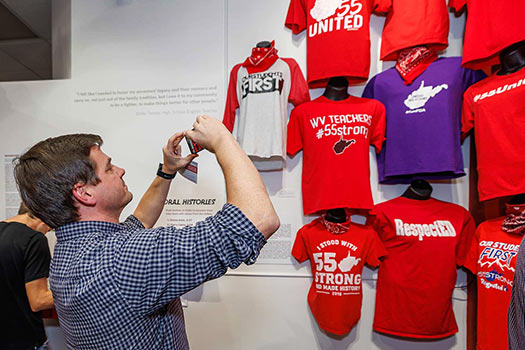
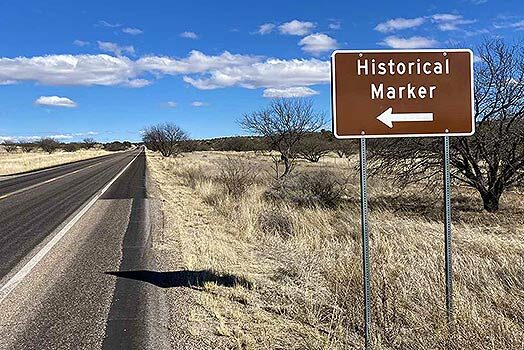



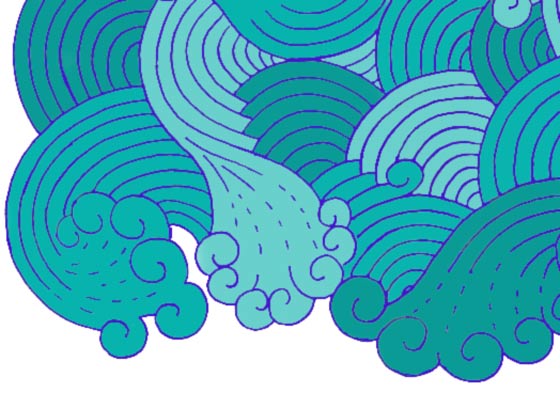
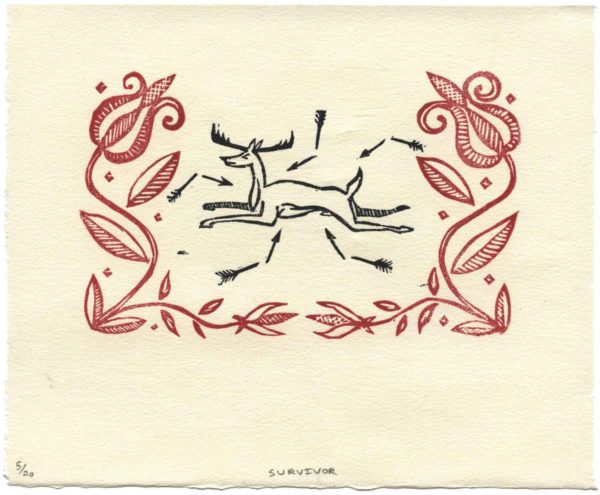
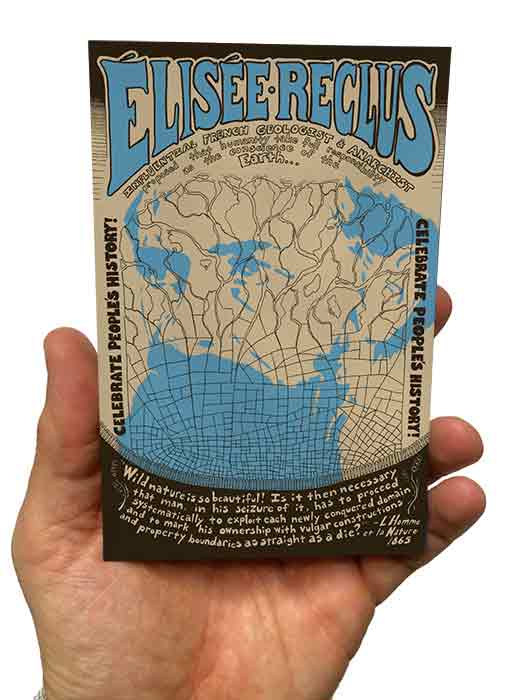
What a heart wrenching story. The images of the folks holding the dying Macho B give off such lost egos. I’m glad Janay is speaking out about the inconsistencies of what went on with Macho B’s death, and I hope that her actions help build greater awareness about the species and how humans can learn to be more responsible stewards of the land.
Thanks for this informative piece.
Shaun, I saw your billboard of Macho B and was wondering if you’d be making prints?
Thanks for the interest Jan – I created a print that is very similar to the billboard design and Janay contributed some additional text to it (I also omitted the radio collar this time). That edition was for an in-progress Justseeds portfolio on immigration issues, but I will probably do another smaller edition later in the year and put it on this site…
Snares are horrible. Shame on the agency for its mishandling of this magnificent animal.
I was Emil McCain’s assistant directly prior to Janay working with him. In fact, Janay was my replacement. For over a decade, I’ve been disappointed that I was never interviewed by the authorities to share my own knowledge of McCain or the entire debacle.
What I would have really liked to have shed some light on was McCain’s father’s role in all of this. I have no doubt he was a big behind-the scenes player in what happened. I was glad that today I noticed the first mention of this man in any type of media; Jany mentioned “his father” in the interview above, as being one of only three people who had access to the GPS data on the jaguar’s location. That didn’t happen by accident. He had no business being there, or in getting involved at all. I’m sure he got away scott-free, and never paid a price for his involvement; and instead let his son take all the rap. I’m not defending Emil, I’m simply saying that the father’s influence on, and control of Emil was overwhelming. I can say with near certainly that this would never have happened as it did, without that overbearing, murderous son of a bitch on the scene, where he didn’t belong.
I started on this project when I was also part of Jack Child’s Jaguar Detection Project, and Emil hired me to help him with the camera traps to get photos of Macho-B. At that time the only evidence of Macho-B that Emil had personally collected was a plaster cast of his track that he made just a couple days before I arrived at the research site in those mountains just north of the Mexico border.
My whole experience there was bizarre, to say the least. I nearly didn’y make it out of there alive, due to that madman that was Emil’s father.
I wrote about my experience here: https://www.quora.com/Have-you-ever-come-into-contact-with-a-deranged-lunatic-who-made-you-fear-for-your-life/answer/Stefan-Pociask
Oh… and that female jaguar scat that Janay planted by the snare? The left-over from a couple years ago that Janay mentioned? That was mine. I collected it for Emil, on his orders. He wanted it to lure Macho-B to the cameras.
If things had turned out just a little different upon meeting that old man, it very well could have been I who experienced the manipulation and deceit that Janay experienced from Emil and his old man.
Still… I sure wish that old man McCain had taken some of the blame as well.
R.I.P. Macho-B